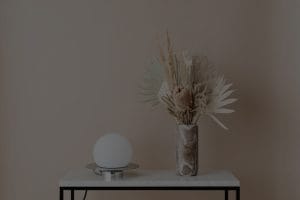**Abstract:** Discover how to strategically position feng shui items in your space for maximum impact. Learn practical tips to enhance energy flow, create harmony, and improve your overall well-being.
Understanding Feng Shui Basics
Feng shui is an ancient Chinese practice that emphasizes the arrangement of your environment to promote positive energy flow, known as “qi.” When considering how to position feng shui items, it’s essential to understand that each object carries its own energy and meaning. For instance, a water fountain symbolizes wealth and abundance, while plants represent growth and vitality. By aligning these items with the principles of feng shui, you can create a balanced and harmonious living space that reflects your desires and aspirations.
Assessing Your Space
Before placing feng shui items, take a moment to assess your space. Walk through each room and note areas that feel stagnant or chaotic. These spaces may need more attention to enhance energy flow. Consider the Bagua map, a feng shui tool that divides your space into nine areas, each representing different aspects of life, such as wealth, health, and relationships. By identifying which areas need improvement, you can strategically position your feng shui items for maximum impact.
Placement Strategies for Key Items
When positioning feng shui items, consider their significance and the energy they bring. For example, placing a mirror in a room can amplify energy, but be cautious about where you place it. Avoid reflecting negative energy, such as clutter or sharp corners. Instead, position mirrors to reflect beautiful views or light. Similarly, crystals can enhance energy; place them in corners or on windowsills to attract positive vibrations. Always remember that the placement should resonate with your personal energy and intentions.
Creating Balance with Color and Material
Colors and materials play a crucial role in feng shui. Each color corresponds to different elements and emotions. For example, blues and blacks relate to water and promote calmness, while reds and oranges symbolize fire and passion. When positioning feng shui items, consider incorporating colors that align with your goals. Additionally, the materials of your items matter. Natural materials like wood and stone promote grounding and stability, while metals can enhance clarity and focus. Aim for a balance of elements to create a harmonious environment.
Enhancing Energy Flow with Arrangement
The arrangement of your feng shui items can significantly influence energy flow. Avoid clutter, as it obstructs qi. Instead, create clear pathways and open spaces. Group similar items together to enhance their collective energy. For example, if you have multiple plants, arrange them in a way that allows each one to thrive without competing for space. Additionally, consider the height of your items; varying heights can create visual interest and facilitate better energy circulation throughout the room.
Maintaining Your Feng Shui Environment
Once you’ve positioned your feng shui items, it’s essential to maintain the energy in your space. Regularly clean and declutter to ensure that positive energy continues to flow. Take time to rearrange items periodically, as energy can stagnate over time. Additionally, be mindful of how you interact with your space; the energy you bring into it is just as important as the items you choose to display. By nurturing your environment, you can create a sanctuary that supports your well-being and aspirations.
In conclusion, positioning feng shui items effectively requires an understanding of energy flow, thoughtful assessment of your space, and strategic placement of items. By following these guidelines, you can harness the power of feng shui to create a harmonious and prosperous living environment.










